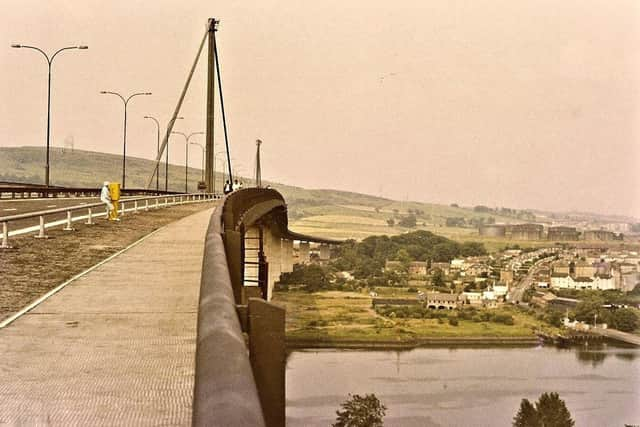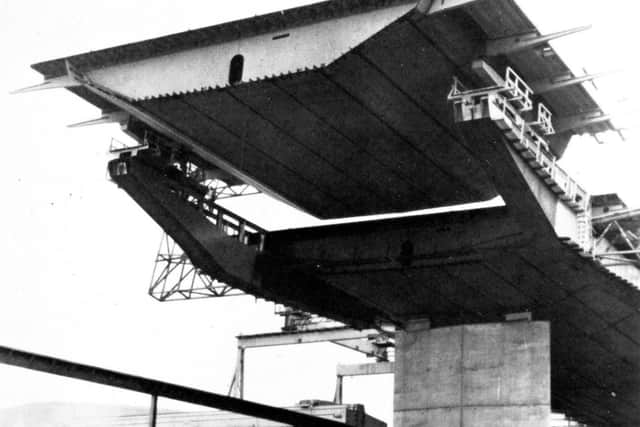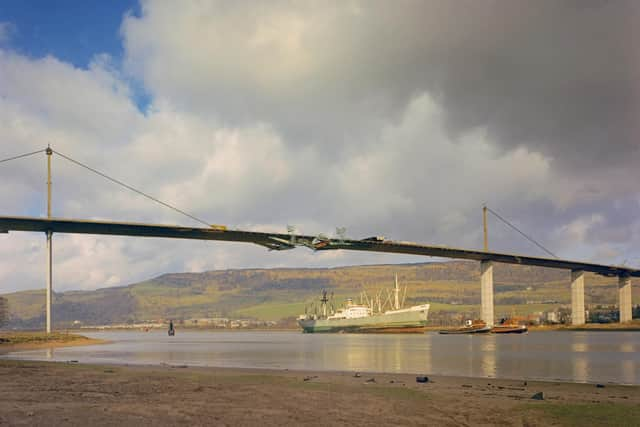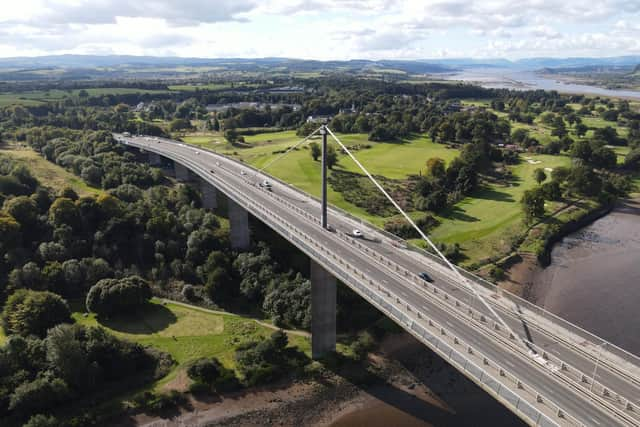Erskine Bridge at 50: Unseen pictures of ‘one of Scotland’s most ambitious engineering projects’
The Erskine Bridge was opened on July 2 1971 by Princess Anne to provide a road link between Dunbartonshire and Renfrewshire for the first time.
It took four years to build at a cost of £10.5 million – the equivalent of almost £150m today.
Advertisement
Hide AdAdvertisement
Hide AdThe crossing was awarded category A – the highest – listed status in 2018 by Historic Environment Scotland


The 0.8 mile-long bridge has supports up to 164ft (50m) high and was the longest cable-stayed bridge in the world when it opened.
It is of a similar type to the Queensferry Crossing, which is the world’s longest triple tower cable-stayed bridge and twice as long.
The previously-unseen pictures have been released by the Glasgow Motorway Archive, in collaboration with Scottish Government agency Transport Scotland, which is responsible for the bridge.
Transport minister Graeme Dey said: “The Erskine Bridge has become an iconic landmark and was, at one point, the longest cable-stayed bridge in the world.


“The crossing helped to significantly cut journey times when it opened to traffic, particularly during the busy tourist seasons.
"It continues to play an important role, carrying over 35,000 vehicles every day.
“The bridge has also been listed for unique architectural and technical features, so it’s important to recognise the impact it has made in the past 50 years.”
Advertisement
Hide AdAdvertisement
Hide AdGlasgow Motorway Archive founder Stuart Baird said: “The Erskine Bridge remains ones of the most ambitious civil engineering projects ever undertaken in Scotland and has become a much loved landmark.


“The archive is delighted to have unearthed previously unseen photos of its construction in time for its 50th anniversary.
"We look forward to sharing them, and a few other surprises, on our website and social media channels.”
Bestowing its category A status, Historic Environment Scotland head of designations Elizabeth McCrone said in 2018: "Its minimalistic single-cable design - which is exceptionally rare for a large-scale road bridge - combined with its largely unchanged appearance makes it one of the country’s most innovative bridges of the 20th century.”
John Yellowlees, Scottish chair of the Chartered Institute of Logistics and Transport, said the bridge remained the only one in Scotland with single cables over central main supports.


He said the ferries it replaced between Erskine and Old Kilpatrick was reputedly the oldest on the Clyde, with drivers latterly charged 10p for the five-minute crossing.
The bridge opened with tolls but the 60p charge was scrapped in 2006 to relieve congestion on the Kingston Bridge and Clyde Tunnel, upstream in Glasgow.
The crossing was closed to lorries for four months after being hit by the Texaco Captain oil platform which as being transported by barge in 1996.
Advertisement
Hide AdAdvertisement
Hide AdAnd in 2017, a “hidden gem” picnic location near the bridge has been named one of the best in the country after a public vote.
“Boden Boo woodland” which is by the River Clyde under the shadow of the bridge, featured in the poll.
A message from the Editor:
Thank you for reading this article. We're more reliant on your support than ever as the shift in consumer habits brought about by coronavirus impacts our advertisers.
If you haven't already, please consider supporting our trusted, fact-checked journalism by taking out a digital subscription.
Comments
Want to join the conversation? Please or to comment on this article.
